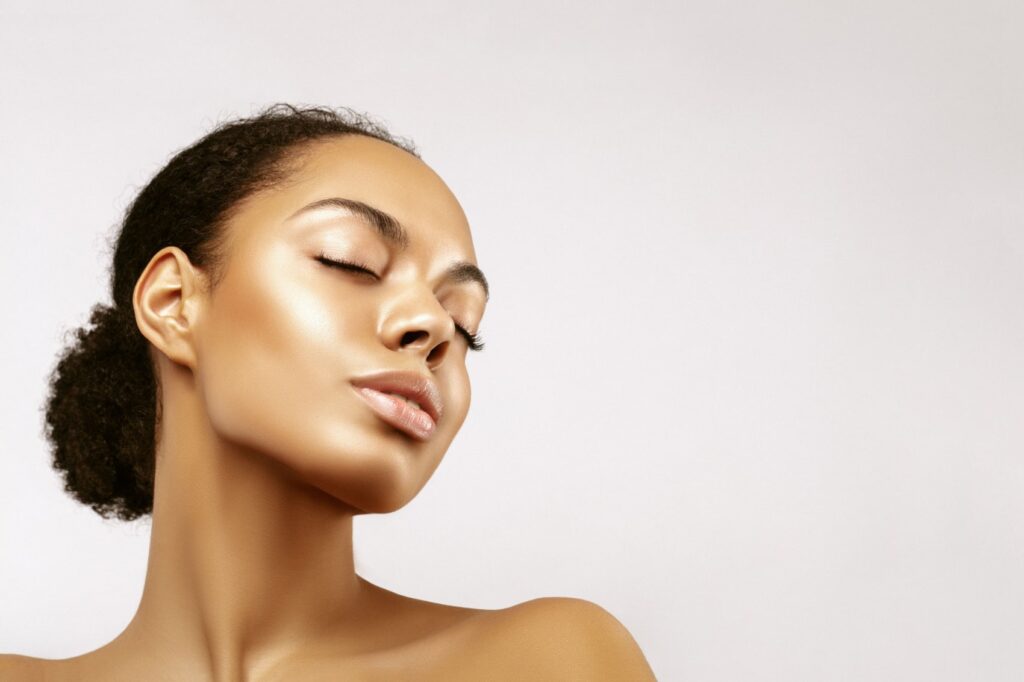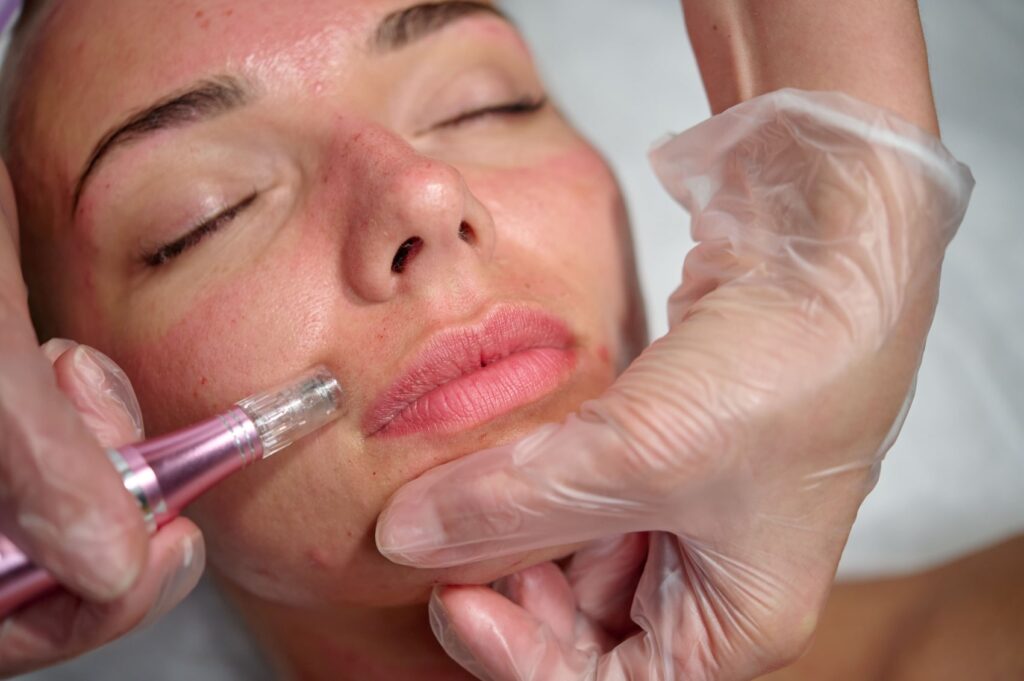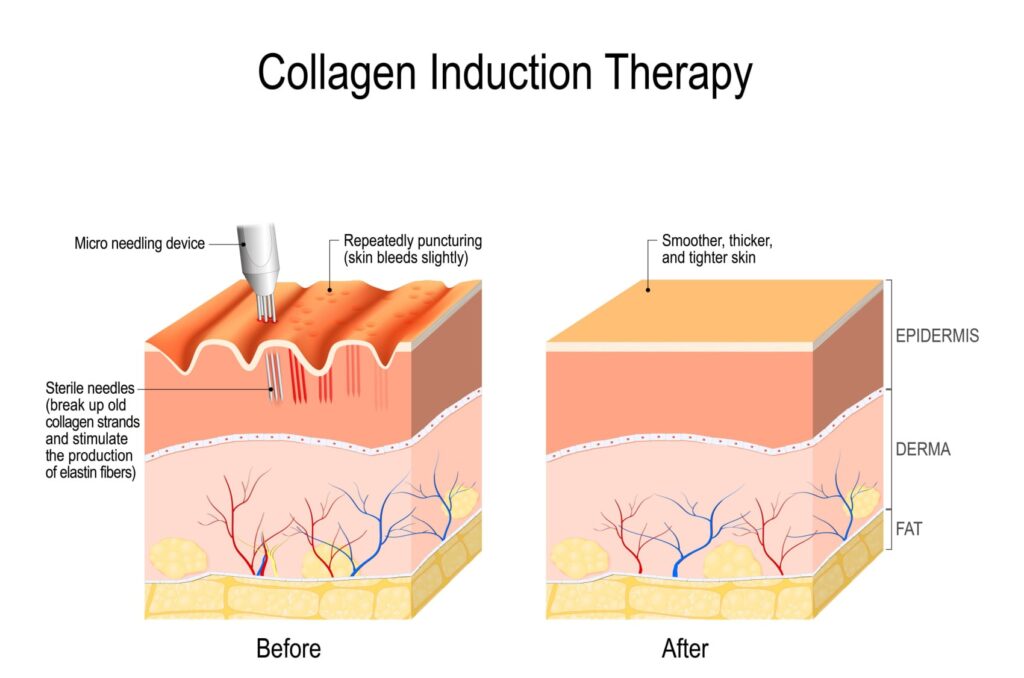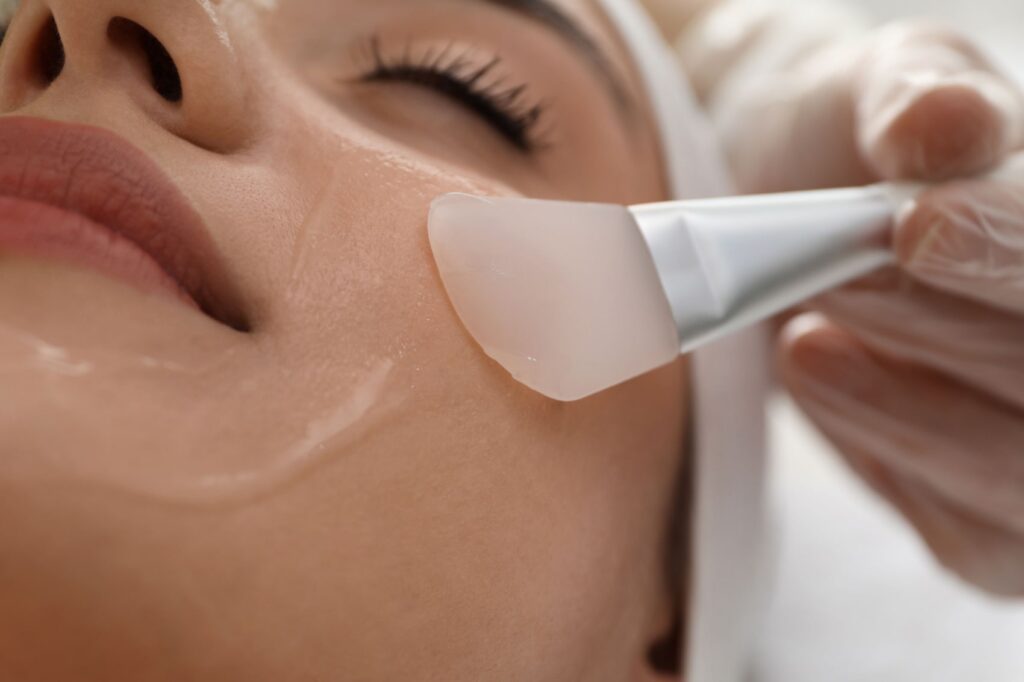Wrinkles are an inevitable part of aging, but sun exposure and lifestyle habits, along with genetics and the environment can exacerbate their development.
If you’re looking to boost your overall complexion and reduce the appearance of lines and wrinkles, Alabaster Aesthetics can help.

Having flawless, glowing skin is everyone’s goal but achieving it can be a journey. With so many choices out there targeting the same problem, how do you know which treatment is the best suited for you?
Microneedling and chemical peels are two of the top treatments that work to reduce facial lines and wrinkles. However, it can be hard to know which is better for your skin’s needs.
Both microneedling and chemical peel are used to treat many of the same conditions by encouraging skin cell turnover and skin regeneration. Both treatments result in improved skin texture, with smoother, brighter, and healthier skin, but are very different treatments with different approaches and the same therapy won’t work for everyone.
Chemical peels generally work best on superficial surface-level imperfections, such as pigmentation, dark spots, active acne, fine lines and texture issues, while microneedling penetrates deeper to improve more troublesome issues, such as acne scars, deep wrinkles, and loose skin.
Chemical peels work to remove damaged layers of skin, whilst microneedling does not remove any skin. Microneedling works by inducing a healing process that replaces damaged collagen and stimulates the production of new collagen.
Both procedures require no downtime and are fairly safe when done by a qualified professional. However, not everyone may be suitable for these treatments, so it’s important to know the differences between the two when choosing which treatment is right for your skin type.
Let’s take a closer look at each one…
Microneedling

Microneedling, or collagen induction therapy, is the process of using thin needles to puncture the skin. These punctures trigger the body’s natural healing process for skin trauma, resulting in elastin and collagen production. This increase in collagen and elastin repairs the damaged layers of skin, getting rid of the broken skin tissue and replacing it with younger, smoother and healthier, more youthful looking skin.
Collagen, is the primary protein that makes up your bodily tissues and is the key ingredient in keeping your skin looking young, firm, and smooth. As we age, collagen production naturally declines. In addition, collagen production can be prematurely stunted when the skin is injured and then scarred, as with scars caused by acne.
Collagen keeps the skin plump and youthful, so increasing collagen production helps restore skin elasticity and strength and helps to smooth fine lines and wrinkles. Results are not instant, but appear as the body repairs the affected area. Maximum results are obtained after a series of microneedling treatments.
Studies have shown that micro needling can produce up to a 1,000% increase in collagen production after a single session.

The needles that are punctured into the skin also create micro-channels allowing for powerful skin rejuvenation products to penetrate deeper into the dermis. This encourages the absorption of active ingredients deeper within the skin than would be possible with topical application.
Alabaster Aesthetics uses a mesotherapy cocktail-based serum from the CLINICARE range which has a unique combination of hyaluronic acid, vitamins, antioxidants, peptides, and other powerful active ingredients which have intense anti-ageing, anti-pigmentation, tightening and hydrating effects.
All products are designed to provide long lasting, deep skin hydration and rejuvenation.
Microneedling requires more than one session for optimal results – the average amount of treatments are three to six every two to six weeks.
Chemical Peel

A chemical peel resurfaces your skin through the use of a chemical solutions applied to the skin. As the chemicals react on your skin, they exfoliate the top layer, causing it to eventually peel off, leaving room for new, smoother skin to grow.
If you have uneven skin pigmentation, textured skin or active acne, chemical peels can reduce their appearance. By getting rid of the outer layer of skin cells, it can reveal smoother skin with even skin pigmentation.
Chemical peels can be a variety of strengths, ranging from superficial to deep.
Superficial peels use more gentle chemicals to treat only the top layer of skin. Medium chemical peels use a higher concentration of the same chemicals to reach the mid-layer of skin for treatment. Deep chemical peels treat deeper wrinkles, mild scars, and severe sun damage with an even more irritating and potent solution of chemicals that peels off a deeper layer of skin and leaves the skin red and crusty.
The recovery from superficial, medium, and deep chemical peels look vastly different. Superficial chemical peels may cause some redness and flakiness to the skin while deep chemical peels cause an actual burn wound on the skin. Several weeks may be required for the skin to recover from a deep chemical peel.
Several light peels will have the same effect as a medium peel without the downtime.
Most patients require about four to six light peels to achieve desired results, spaced two weeks apart.
The chemical peels used at Alabaster Aesthetics are CLINICARE’s highest quality 2nd generation peels, which come in three targeted ranges for specific skin indications and are extremely well tolerated with minimal side effects. The peel selected is tailored to your specific skin concerns. The three peels are:
Glow Peel’ – A glycolic, mandelic and kojic acid-based peel which targets melasma, hyperpigmentation, sun damaged & de-hydrated skin.
‘Pure Peel’ – An azelaic, salicylic, glycolic and lactic acid-based peel which targets blemishes, acne and sensitive skin.
‘Refresh Peel’ – A glycolic and kojic acid-based peel which targets surface fine lines, wrinkles & skin rejuvenation.
So which treatment is right for you?…
Chemical peels can be risky for patients with darker complexions and are not recommended for patients with loose skin and severe wrinkles.
Microneedling is ideal for anyone with skin concerns that don’t just have to be surface-level, such as fine lines, wrinkles, textured skin, loose skin, stretch marks, scars, or sun damage. However, it is not recommended for patients with bacterial skin diseases like acne, psoriasis, or eczema, as the bacteria can enter the microchannels created with the needle and cause infection.
However, no one treatment fits everyone’s needs.
Many people with acne scars, or fine lines and wrinkles find a combination of microneedling and chemical peels deliver the best results. Microneedling will reach deeper under the skin to promote healing of scarred areas and boost collagen and elastin to reduce wrinkles. Once the microneedling treatments are complete, a chemical peel can rejuvenate your skin further, leaving you with clearer, younger-looking skin.
| Microneedling | Chemical Peel | |
| Dark spots, uneven skin tone | ✓ | |
| Acne | ✓ | |
| Surface fine lines | ✓ | ✓ |
| Deep wrinkles & loose skin | ✓ | |
| Acne scars | ✓ |
Please get in touch if you would like to book a consultation or have any questions regarding the treatments.
